
- Hiroshima Day
Remembering Hiroshima Through Cinema
On the morning of August 6, 1945, the first atomic bomb was dropped over the Japanese city of Hiroshima. Three days later, on August 9, another atomic bomb was dropped over Nagasaki. The attack destroyed both cities, killed an estimated 250,000 people and helped put an end to World War II.
Besides Alain Resnais’ masterful Hiroshima, Mon Amour, most of the reflection on the bombing and its aftermath has been coming out, unsurprisingly, from Japan. There, the trauma of Hiroshima made its way into mangas such as Town of Evening Calm, Country of Cherry Blossoms and the Barefoot Gen series; and movies like Hideo Oba’s The Bells of Nagasaki (1950), Kaneto Shondo’s Children of Hiroshima (1953, entered into the Cannes Film Festival), Shohei Imamura’s Black Rain (1989), Koreyoshi Kurahara and Roger Spotiswood’s Hiroshima (1995), Yoshishige Yoshida’s Women in the Mirror (2003, also a Cannes entry) Kazuo Kuroki’s The Face of Jizo (2004), Takeo Kimura’s abstract Matouquin Nocturne (2007); and most of Akira Kurosawa’s poetic Dreams (1990) and of his 1991 film Rhapsody in August. One could also argue that Godzilla and the kaiju pictures from the 1950s onward are all creatures of the trauma of Hiroshima and Nagasaki.
Hollywood versions of the story tend to focus on the making and dropping of the bombs. As early as 1947, a mere two years after the attack, the docudrama The Beginning of the End chronicled the Manhattan project and the creation of the atomic bomb. Directed by Norman Taurog, the picture had Hume Cronyn as Dr. Robert Oppenheimer and Ludwig Stossel as Albert Einstein. Five years later another docudrama, Above and Beyond, directed by Melvin Frank and Norman Panama, chronicled the life of the Lt. Col. Paul Tibbets Jr, the pilot of the aircraft that dropped the bomb in Hiroshima. (Robert Taylor played Tibbets, Eleanor Parker played his wife.)
Roland Joffé’s Fat Man and Little Boy (1989) delved deeply on the relationship between project director General Leslie Groves (Paul Newman) and its scientific director, Dr. Oppenheimer (Dwight Schultz), and allowed for existential and moral questions, voiced mostly by Oppenheimer’s team of young scientists and support staff (John Cusack, Laura Dern). The TV series Manh (A) ttan takes a similar approach, pitching the military against the scientists, and instilling a sense of foreboding in the inexorable march towards the most destructive weapon humankind has ever devised.
Recent years have finally brought new visions. Steve Nguyen and Choz Belen’s 2012 animated short Hibakusha reconstructs the memories of a middle-aged woman who survived the bombing.
The same concept – revisiting the personal experience of a hibakusha, the Japanese word for “atomic bomb survivor”) is at the core of Message from Hiroshima, a moving feature documentary generated by a unique collaboration among L.A. area filmmaker Mark Farquhar, Disney/Pixar animator Yuriki Senoo and Japanese filmmaker and hibakusha Masaaki Tanabe.
While in Japan in 2008 researching a project about the aftermath of the bombings of Hiroshima and Nagasaki, Senoo and Farquhar met Tanabe, who was working on his own film about his personal memories as a hibakusha. Tanabe invited the duo to collaborate, and the trio put together a Japanese version of Message From Hiroshima, which premiered on the Japanese TV network NHK in August 2010, the 65th anniversary of the bombing.
The English version, narrated by George Takei, is now finally available in the U.S., in time for the 70 years of the bombing. With the combined talents of a team of animation students from Cal State Northridge with additional contributions from another L.A. animator, Adam Dykstra, Senoo and Farquhar digitally recreated 1940s Hiroshima in minute detail, guided by Tanabe’s recollections. Message From Hiroshima is available on DVD and on demand on Hulu, Amazon Instant Video and Cinema Libre on Demand.
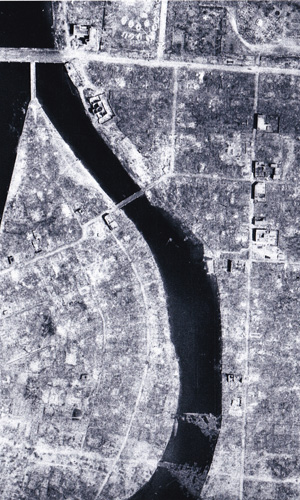
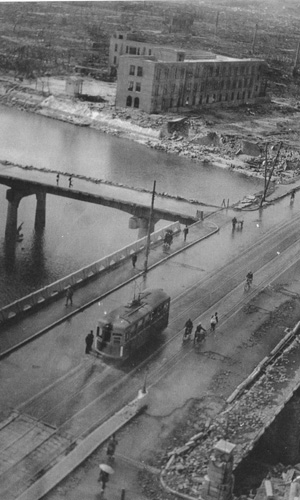
Before and After The Bomb
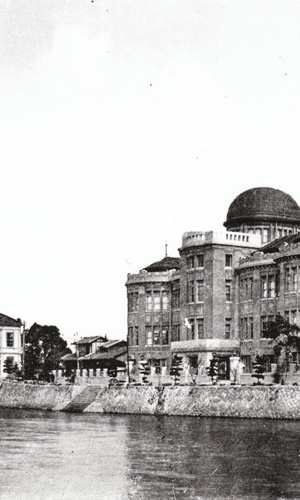
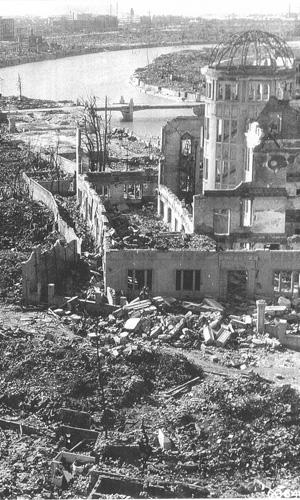
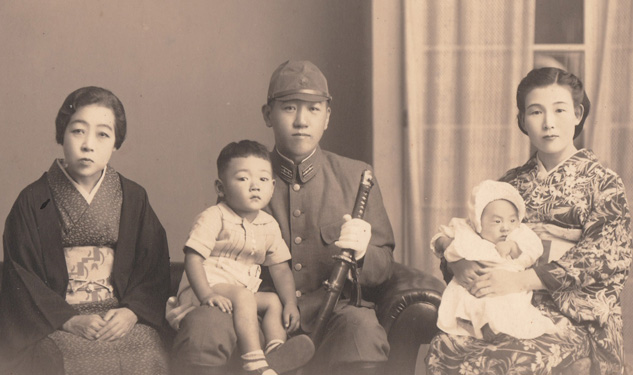
Photo credit: Tanabe Personal Archive/Courtesy Cinema Libre

